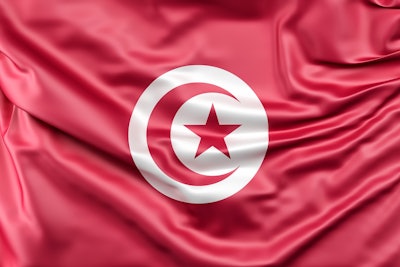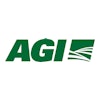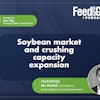A combination of competitive prices and market-specific educational efforts from the U.S. Grains Council (USGC) has driven the continued expansion of demand for U.S. distiller’s dried grains with solubles (DDGS) and U.S. corn throughout the Middle East and Africa (MEA) region. This outreach reflects the unique set of policies, industry structures and demand dynamics for each country and is paying in increased sales. The first vessel of 22,000 metric tons of DDGS landed last week in Tunisia, where the Council's regional office covering programs in Africa, Europe and the Middle East is located. Tunisia will also soon be home to aCenter for Feed Manufacturing, funded by a grant from the U.S. State Department, that will boost training for regional feed producers and simulate demand for U.S. corn, barley, sorghum and co-products. Other nearby countries are also recording new and increased sales this marketing year following policy shifts and marketing outreach.
|
The Council actively works to help identify both short-term market opportunities as well as build long-term demand in the MEA region. |
For example, Algeria’s historically complex environment and government control have limited opportunities for U.S. exports in the past. However, the Council has worked with industry leaders as the political tide has started to shift and open new market opportunities for U.S. corn and co-products. Algeria has purchased 120,000 tons of U.S. corn this marketing year, as of April 12, 2018, compared to 90,900 tons total in 2016/2017.
In January, the government of Algerialifteda value-added tax (VAT) on U.S. DDGS and corn gluten feed (CGF) for 2018, affording even more market opportunities this year.
Beyond political change, supply and demand factors set the stage for U.S. DDGS and corn to enter these markets. China has purchased primarily Ukrainian corn in recent years, which has drained the availability of supplies from the Black Sea and made that grain scare and more expensive than U.S. corn. As a result, countries throughout the region that typically purchase Black Sea corn are switching to purchasing U.S. corn.
“Even countries that typically buy mostly from Ukraine due to price and accessibility because they are close have no option but to buy from other origins,” said, Alvaro Cordero, USGC manager of global trade. “This has opened the door to U.S. corn because U.S. corn has been more affordable and is more reliable in deliveries throughout the year.”
The Council’s strong relationships with local industries in the region provided an avenue to share this information. For example, the Council has been active in Egypt for more than 30 years with programs to build demand, especially in the dairy and poultry sectors. As a result, the Council developed and maintains strong ties with the Egyptian industry to promote increased U.S. corn exports. As of April 12, 2018, Egypt had purchased more than 900,000 tons of U.S. corn, with more than four months left in the marketing year, compared to 322,000 tons total last marketing year.
End-users in Egypt are also working to capitalize on new feed ration options, expanding purchases to include not only corn, but also DDGS, sorghum or exploring a mix of commodities in a combination shipment.
The Council has increased promotion of co-products like DDGS into the region to further maximize the U.S. competitive advantage of this high quality feed ingredient for growing ruminant, poultry and aquaculture sectors.
Turkey is the driving force in the region in terms of DDGS imports. Turkey purchased 1.36 million tons of U.S. DDGS in the 2016/2017 marketing year, nearly double from the year prior, making Turkey the second largest DDGS buyer for the year. Thus far in the new marketing year (September 2017-February 2018), Turkey has purchased nearly 452,000 tons of U.S. DDGS, exceeding the total from just two years ago.
安理会一直活跃在中国through assessment missions, engaging the country’s six major feed grain importing companies and organizing regional seminars on quality to build confidence in marketing opportunities and connect end-users with U.S. suppliers.
“Markets in the Middle East and Africa are typically characterized as strict price buyers, meaning importers make purchasing decisions primarily on the lowest cost options available,” Cordero said. “However, these markets are placing a higher value on the quality and reliability of U.S. coarse grains and co-products, evidenced by continued purchasing despite incremental increases in price.”
Importantly, these markets have continued to increase purchases of both corn and co-products like DDGS even as prices in the region have started to creep upward. Such positive trends further demonstrate the value of the Council’s efforts to keep end-users and buyers informed to the quality of these commodities to feed rations.
“These markets are continuing to grow and their demand for feed grains is increasing,” Cordero said. “This is good news for U.S. farmers who will continue to see bigger markets for coarse grains and co-products in the region.”
Learn more about the Council's work in the MEA regionhere. |






















